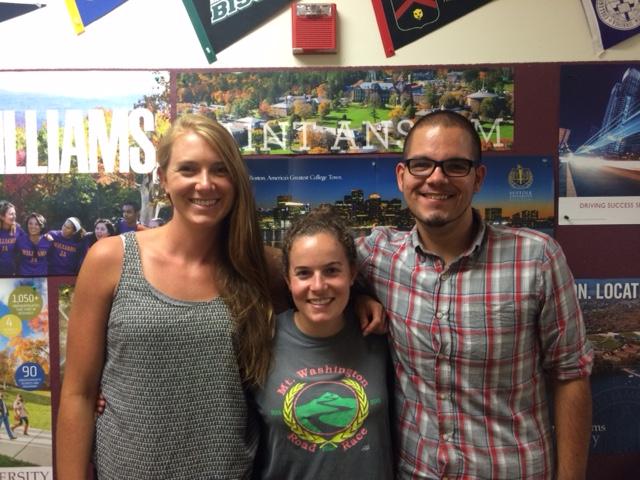
In Emily Berman’s ninth grade biology class, social justice is a central theme. She’s part of a group of six teachers that brought an interdisciplinary approach to teaching Facing History’s “Race and Membership” unit last year at Blackstone Academy Charter School in Pawtucket, Rhode Island.As part of the Innovative Schools Network, Blackstone Academy created a unit that takes all aspects of discussing race and integrated it into a cohesive series of lessons that combines history; English Language Arts (ELA); and biology classes. And it’s been empowering for both students and teachers – especially in light of what’s happening in the world today.
“Sometimes as a science teacher you think you can’t have a conversation about race with your students in a way that’s relevant to your content,” says Berman. “This unit provided me with a way to do that and help my students think about how science has played a role to create race.”
Berman, along with other teachers like Elena Maker and Julio Alicea, both history teachers at Blackstone, examined race through their individual disciplines. Using essential questions, like “Is race real?” they incorporated readings, case studies, and an exploration of race in science to address how race influences our identities, perspectives, and interactions.
While Alicea incorporated themes such as colorblindness, post-raciality, and the social construction of race into his world history class, Maker went through a timeline on how the United States has conceptualized race since slavery. And the interdisciplinary approach equipped students to analyze current events that dealt with race, says Alicea.
But it really helped teachers facilitate honest and real conversations with their students about a topic that is central to their everyday lives. Blackstone’s student body is a diverse mix of students from Central and South American backgrounds and from the Caribbean, Africa, the Middle East, and Portugal.
”Race is already on their minds,” says Berman. “They’re being berated with these images of being ‘less than’ every day due to their skin color or ethnicity or the way they talk or the way their family talks.”
Berman deconstructed the science behind skin tones with her students. They discussed the different types and levels of melanin in the skin so they could understand from a survival standpoint that skin color is simply a reflection of their ancestors adapting to their environment.
This opened the door for better self-reflection, says Maker. By breaking down the science and incorporating it with other portions of history and ELA, they could start to look beyond defining themselves – and others – through their individual races.
“It was a very humanizing experience for students,” says Maker. “They can identify different types of racism and why it’s not okay. The unit gives them more of a reason to fight racism when they understand it’s a social product people created over the last 500 years.”
And it also gave teachers the chance to be more honest about their own identities, demonstrating that they are participating alongside their students, not just lecturing through a lesson.
“I was able to be open about acknowledging my white privilege in front of them,” says Berman. “I don’t think they hear that from a lot of white adults in their life.”
The teachers want to continue these important lessons as their “Race and Membership” students enter their sophomore year. They plan to begin the year with a focus on identity that draws from Facing History’s lessons, including the new unit, “Facing Ferguson: News Literacy in a Digital Age,” and encourage their students to apply what they learned from the previous year. They also want students to keep thinking critically about these issues in their daily lives.
“It’s about empowerment,” says Maker. “We want to set them up to use their education more consciously.”
Berman is also constantly thinking of ways she can incorporate more social justice themes into her science classes.
“I would love to think about other ways science teachers can get professional development to teach social justice in their classrooms,” she says. “There are a lot of teachers that want to do this.”
How have you seen social justice issues incorporated into science education?
*Photo: Teachers Elena Maker, Emily Berman, and Julio Alicea from Blackstone Academy Charter School.


